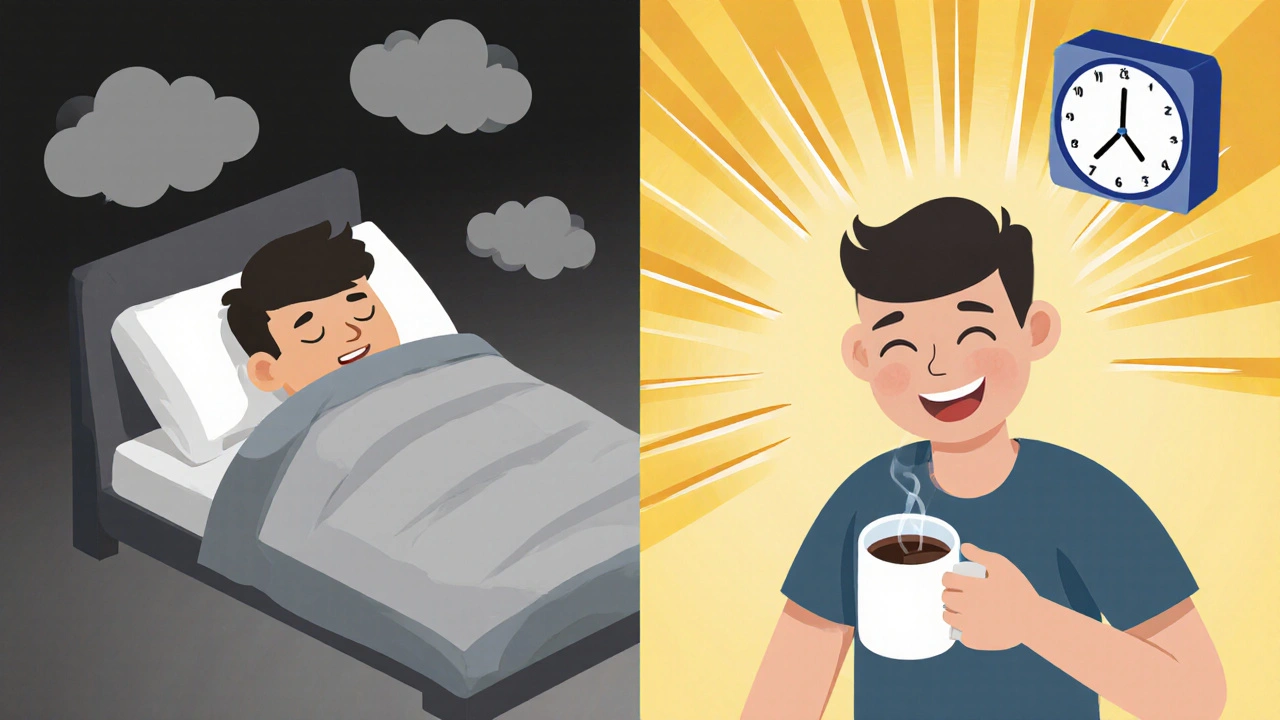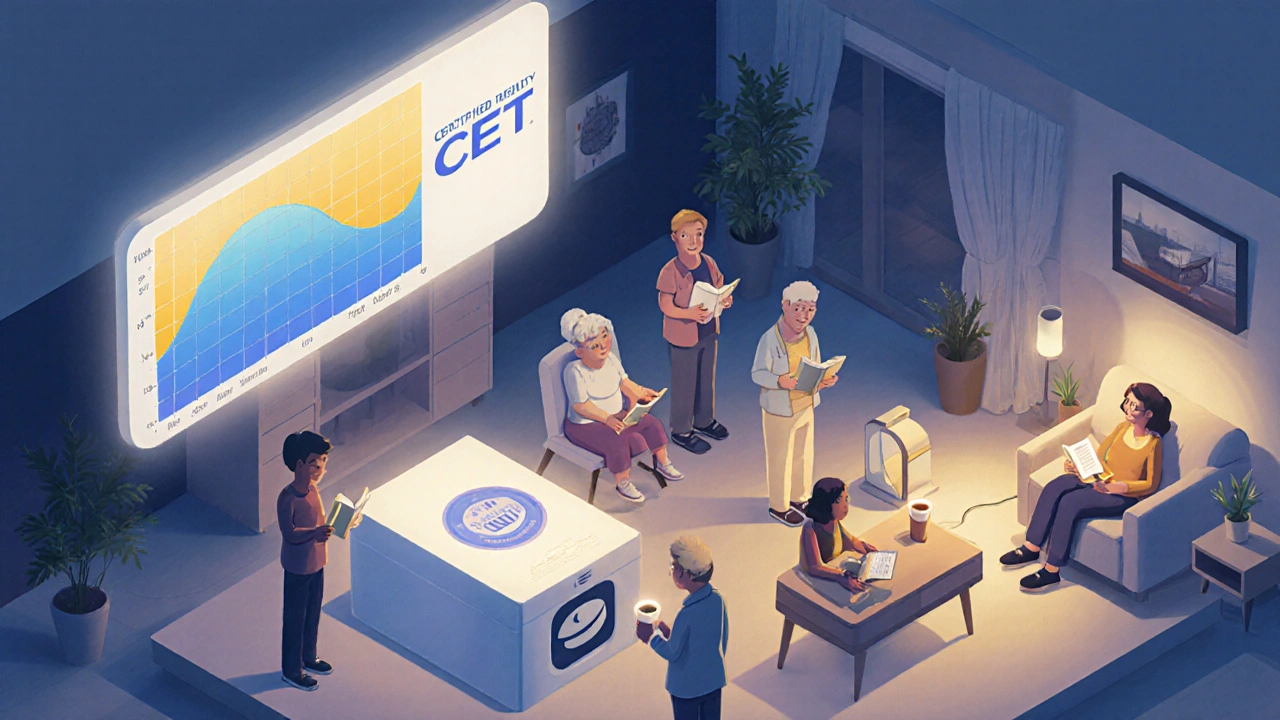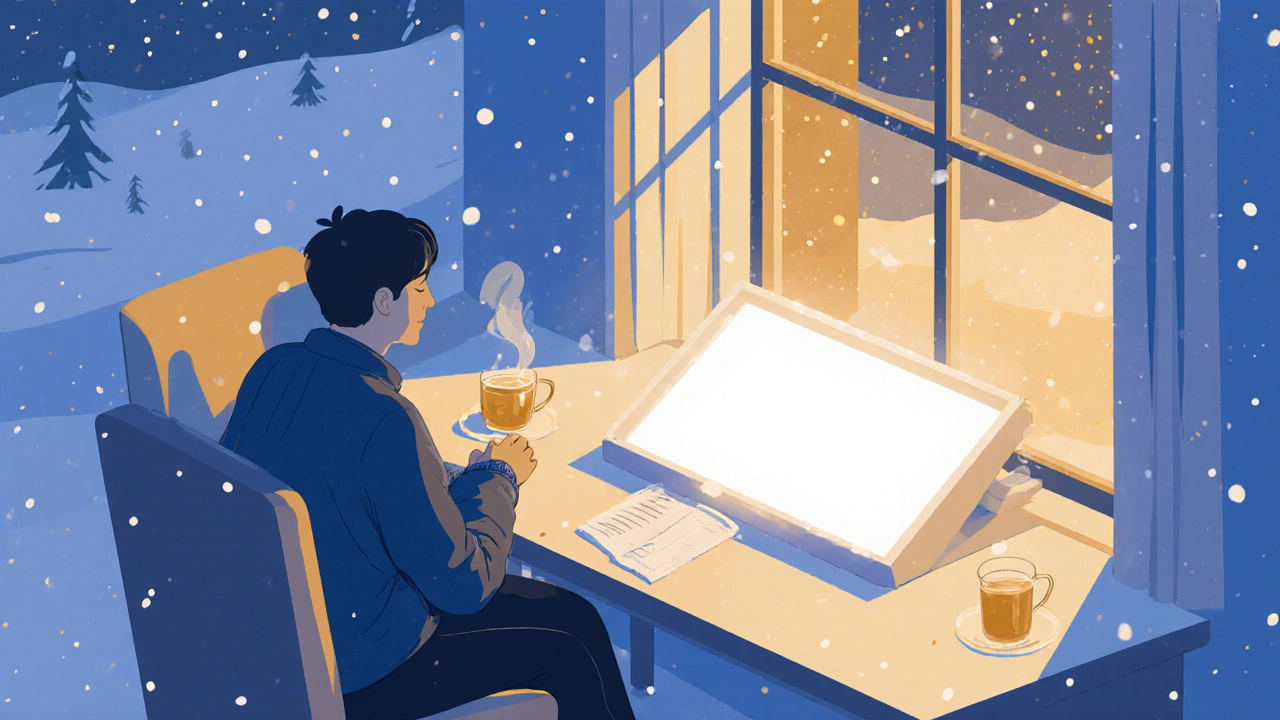What Is Seasonal Affective Disorder?
Seasonal Affective Disorder, or SAD, isn’t just feeling a little down when it’s dark outside. It’s a real type of depression that shows up every year at the same time-usually in late fall or early winter-and lifts again in spring. People with SAD don’t just hate the cold; they feel exhausted, sluggish, and emotionally numb. Simple tasks like getting out of bed, answering emails, or even making coffee feel overwhelming. Some people sleep 10 or 12 hours a day and still feel tired. Others crave carbs like crazy-bread, pasta, sweets-and gain weight without changing their routine. Social plans get canceled. Motivation vanishes. And it’s not just in your head. This is a biological response to less sunlight.
It’s more common than you think. About 5% of adults in the U.S. get diagnosed with SAD each year, and the numbers are similar in places like the UK, where daylight drops to under 8 hours in December. Women between 25 and 45 are most affected, making up nearly 70% of cases. But it’s not just about mood. Your body’s internal clock-your circadian rhythm-gets thrown off. Less light means less serotonin, the brain chemical that helps you feel calm and focused. At the same time, your body makes too much melatonin, the sleep hormone. That’s why you feel sleepy during the day and wired at night.
How Light Therapy Works
Light therapy isn’t just sitting near a bright lamp. It’s a targeted treatment designed to trick your brain into thinking it’s getting the sunlight it’s missing. The science behind it is solid. In 1984, Dr. Norman Rosenthal and his team at the National Institute of Mental Health proved that exposure to bright artificial light could reverse SAD symptoms. Since then, dozens of studies have confirmed it. Today, the American Psychiatric Association and the Canadian Network for Mood and Anxiety Treatments both list bright light therapy (BLT) as a first-line treatment for mild to moderate SAD.
The magic happens in your eyes. When light enters your eyes-even if you’re not staring directly at it-it sends signals to the hypothalamus, the part of your brain that controls sleep, mood, and appetite. This resets your circadian rhythm. Your serotonin levels rise. Melatonin drops. Within days, you start to feel more awake, less irritable, and more like yourself again.
Most people notice changes within 3 to 7 days. One Reddit user, ‘WinterSurvivor89’, reported their depression score dropped from 22 to 8 on a clinical scale after just five days of daily use. That’s faster than most antidepressants, which can take 4 to 6 weeks to work.
What You Need: The Right Light Box
Not all bright lights are created equal. A regular desk lamp won’t cut it. You need a device that delivers at least 10,000 lux of light-about 20 times brighter than a typical indoor light. That’s the standard used in nearly every clinical trial. Devices that output less than 5,000 lux often don’t work well, even if they’re expensive.
Here’s what to look for:
- 10,000 lux intensity-this is non-negotiable for effectiveness.
- UV-free-the light should filter out all ultraviolet rays. Eye damage is rare, but it’s avoidable.
- Full-spectrum white light-blue light (460-480 nm) may be more effective, but most proven devices use white light.
- Size and placement-the box should be big enough to fill your peripheral vision. Sit 16 to 24 inches away, slightly off to the side. You can read, drink coffee, or scroll on your phone while it’s on. Just don’t stare directly at it.
Popular models like the Carex Day-Light Classic Plus have over 2,800 Amazon reviews, with 68% of users reporting significant mood improvement. Prices range from $100 to $300. The more expensive ones often include dawn simulation-a feature that slowly brightens your room before you wake up, mimicking sunrise. That can help if you struggle to get out of bed.
Be careful with cheap, no-name brands. Consumer Reports tested 37 light boxes in early 2024 and found that 37% of non-certified models didn’t deliver the advertised lux level. Stick to brands recommended by the Center for Environmental Therapeutics (CET), a nonprofit that tests and certifies devices.

How to Use It Correctly
Using a light box wrong can mean no results-or worse, headaches and eye strain. Here’s the right way:
- Do it in the morning. The best time is within the first hour after waking. Morning light resets your clock. Evening light can mess up your sleep.
- Use it for 30 minutes. That’s the standard. Some people need 20 minutes; others need up to 60. But start with 30.
- Keep your eyes open. You don’t need to stare at the light. Just have it in your field of vision. Reading, working, or having breakfast while it’s on works fine.
- Be consistent. Missing a day or two won’t ruin everything, but skipping it for a week? Your symptoms will creep back.
Dr. Michael Terman’s research at Columbia University found that morning users had a 68% remission rate. Evening users? Only 47%. Timing matters.
If you get eye strain, try lowering the brightness slightly or taking a 5-minute break halfway through. Most people adjust within a few days. If headaches or nausea persist, stop and talk to your doctor.
How It Compares to Other Treatments
Antidepressants like fluoxetine (Prozac) are also used for SAD. But here’s the thing: light therapy works faster. In a 2006 study of 96 patients, those using light therapy showed better improvement by week 2 than those on Prozac. By week 8, both worked equally well-but light therapy had fewer side effects. No weight gain. No sexual dysfunction. No brain fog.
Compared to placebo, light therapy is twice as likely to produce a meaningful response. One study showed 61% of people using light therapy went into full remission, compared to just 32% using a fake device.
But it’s not perfect. For severe depression, light therapy alone often isn’t enough. Some people need it paired with talk therapy or medication. And if you have bipolar disorder, light therapy can trigger mania in 5-10% of cases. That’s why you should always check with your doctor before starting.
And while antidepressants require daily pills, light therapy requires daily routine. That’s the trade-off. If you’re the kind of person who forgets to take your vitamins, you might struggle to stick with it.
Who Should Avoid Light Therapy
Light therapy is safe for most people. But it’s not for everyone.
- People with bipolar disorder-especially those who’ve had manic episodes. Light therapy can flip the switch.
- Those with eye conditions-like glaucoma, macular degeneration, or diabetic retinopathy. Even though the light is UV-free, your eyes may be more sensitive.
- People taking photosensitizing medications-some antibiotics, acne treatments, and psychiatric drugs can make your skin or eyes more reactive to light.
If you’re pregnant, light therapy is one of the safest options. Antidepressants aren’t always recommended during pregnancy, but light therapy has no known risks to the baby. A 2024 study found that 54% of pregnant women with depression saw improvement with light therapy.

Real People, Real Results
On Reddit’s r/SAD community-with over 145,000 members-stories go both ways. Some say it’s life-changing. Others say it’s a waste of money.
‘WinterSurvivor89’ wrote: ‘I used to dread November. Now I feel like I can breathe again.’
But ‘LightBoxSkeptic’ said: ‘I tried three different boxes. Nothing. Just eye strain and frustration.’
Why the difference? Timing. Consistency. And the right device. People who stick with it for at least two weeks and use a certified 10,000 lux box are far more likely to see results. Those who use it for 5 minutes while making coffee, or buy a $50 lamp off Amazon, often give up too soon.
According to a 2023 NAMI survey, 61% of people who tried light therapy kept using it long-term. The main reason? It worked. The main reason people quit? It was inconvenient.
What’s Next for Light Therapy
Light therapy isn’t just for winter depression anymore. A major 2024 study in JAMA Psychiatry found that 41% of people with non-seasonal depression went into remission using light therapy-compared to 23% in the control group. That’s huge. It means this treatment could help people who’ve tried everything else.
The FDA just approved the first prescription-only light therapy device for treatment-resistant depression. Wearable light therapy-like the Luminette 3 glasses-is growing fast, with sales up 200% in 2023. And companies are starting to build smart light systems that adjust automatically based on your sleep patterns.
But the biggest barrier? Cost and coverage. Only 18% of U.S. insurance plans pay for light boxes. In the UK, NHS prescriptions rarely cover them. That means most people pay out of pocket. But with prices dropping and awareness rising, that’s starting to change.
Final Thoughts: Is It Worth Trying?
If you’ve felt this way every winter for years-if you’ve noticed a pattern of low energy, cravings, and sadness that lifts in spring-then yes, it’s worth trying. Light therapy isn’t a miracle cure. But it’s one of the few treatments for SAD that’s backed by decades of solid science, has almost no side effects, and works faster than pills.
You don’t need to be an expert. You don’t need a prescription. Just get a certified 10,000 lux light box, use it every morning for 30 minutes, and give it at least two weeks. If it doesn’t help, talk to your doctor about other options. But if it does? You might find yourself looking forward to winter for the first time in years.
